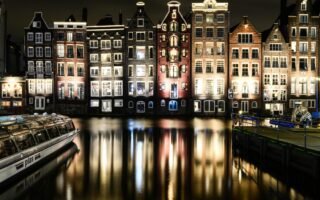Imagine walking down a bustling city street in the late hours of the evening, when the sun has set and darkness descends. Suddenly, you are captivated by the mesmerizing glow emanating from a building, as if it were adorned with a thousand twinkling stars. This captivating display is the result of the art and science of architectural lighting design. Expertly crafted illumination can transform the ordinary into the extraordinary, highlighting the beauty of architectural features and creating a magical ambiance. In this article, we will explore the world of architectural lighting design and how it brings buildings to life after dusk, turning them into beacons of dazzling light.
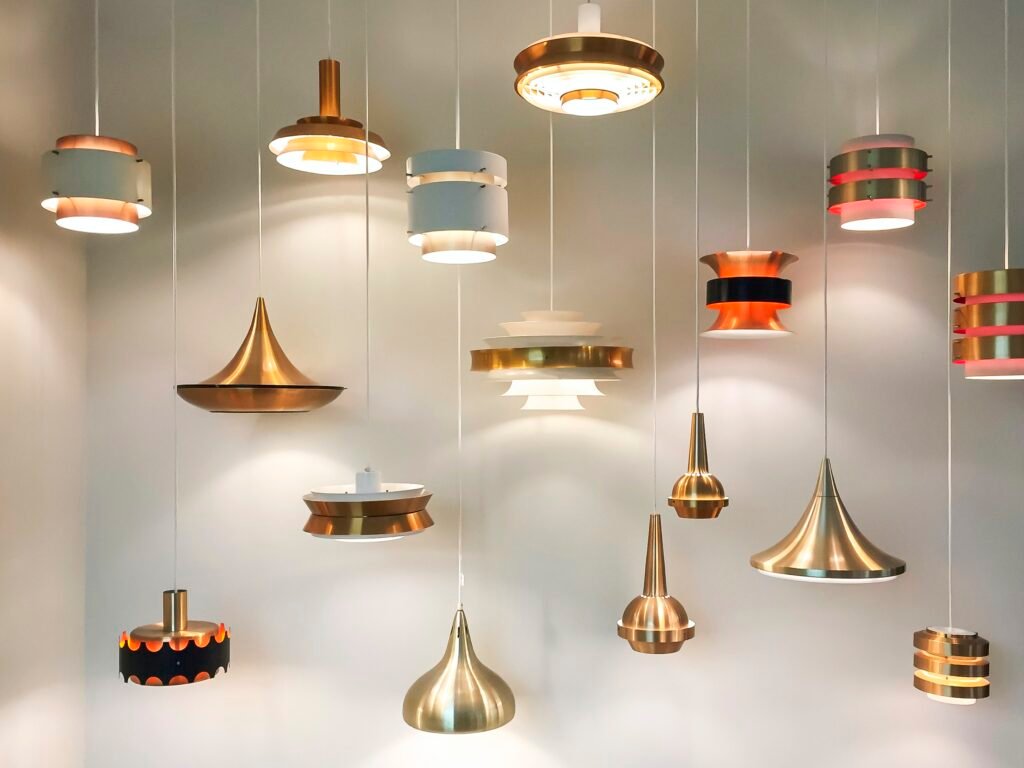
Understanding Architectural Lighting Design
Architectural lighting design is a specialized discipline that involves the art and science of lighting within the context of architecture. It aims to enhance the visual experience, functionality, and aesthetic appeal of spaces by strategically manipulating light sources. From highlighting architectural features to creating specific moods, architectural lighting design plays a vital role in shaping the overall ambiance of a space.
The Importance of Architectural Lighting
Architectural lighting goes beyond mere illumination; it adds depth, character, and emotion to a built environment. Proper lighting design can transform a space, making it more inviting, comfortable, and functional. It allows architects and designers to emphasize certain elements, create focal points, and guide the eye throughout a space. Whether it is a residential, commercial, or public building, architecturally designed lighting has the power to make a lasting impression and enhance the overall user experience.
Different Types of Architectural Lighting
Architectural lighting encompasses various types of lighting techniques that serve different purposes. Understanding these types can help in creating a well-rounded and dynamic lighting design.
-
General Lighting: Also known as ambient lighting, this provides overall illumination to a space and ensures basic visibility. It is the foundation of any lighting design and typically consists of fixtures like recessed lights, chandeliers, or ceiling-mounted fixtures.
-
Task Lighting: Task lighting is focused lighting that serves a specific purpose, such as illuminating work areas, reading nooks, or kitchen countertops. It is designed to provide ample light for performing tasks and can be achieved through the use of desk lamps, under-cabinet lights, or adjustable spotlights.
-
Accent Lighting: Accent lighting is used to highlight specific architectural features, artwork, or decorative elements in a space. It adds drama and visual interest by creating contrast and drawing attention to focal points. Accent lighting can be achieved through the use of track lights, wall-mounted fixtures, or picture lights.
-
Decorative Lighting: This type of lighting adds a decorative element in itself, contributing to the overall aesthetic of a space. Examples include statement pendant lights, ornate chandeliers, or decorative wall sconces. Decorative lighting fixtures can serve as focal points and enhance the visual appeal of a room even when not in use.
-
Natural Lighting: Natural lighting refers to utilizing natural daylight as a primary source of illumination. Incorporating windows, skylights, or light tubes can allow for the infusion of natural light, which not only saves energy but also has a positive impact on human well-being.
Design Principles for Architectural Lighting
To design effective and visually appealing architectural lighting, certain design principles should be considered.
Balance and Contrast
Balance and contrast are essential elements in creating a harmonious lighting design. Balance refers to distributing light sources evenly throughout a space, ensuring that one area does not overpower another. Contrast, on the other hand, involves creating visual interest by juxtaposing areas of light and darkness. By playing with these contrasting elements, lighting designers can highlight architectural details and create a dynamic atmosphere.
Scale and Proportion
Scale and proportion play a crucial role in determining the effectiveness of lighting design. The size and placement of light fixtures must align with the scale of the space and the elements they are illuminating. Similarly, the proportion of light distributed in relation to the overall size of a room must be carefully considered to achieve the desired visual impact.
Rhythm and Movement
Rhythm and movement refer to the flow of light throughout a space. By carefully choreographing the arrangement of light sources, designers can create a sense of rhythm that draws the eye smoothly from one point to another. This can be achieved by varying light intensities, directionality, or using lighting fixtures with adjustable positions. By incorporating movement in lighting design, spaces can be animated and engaging.
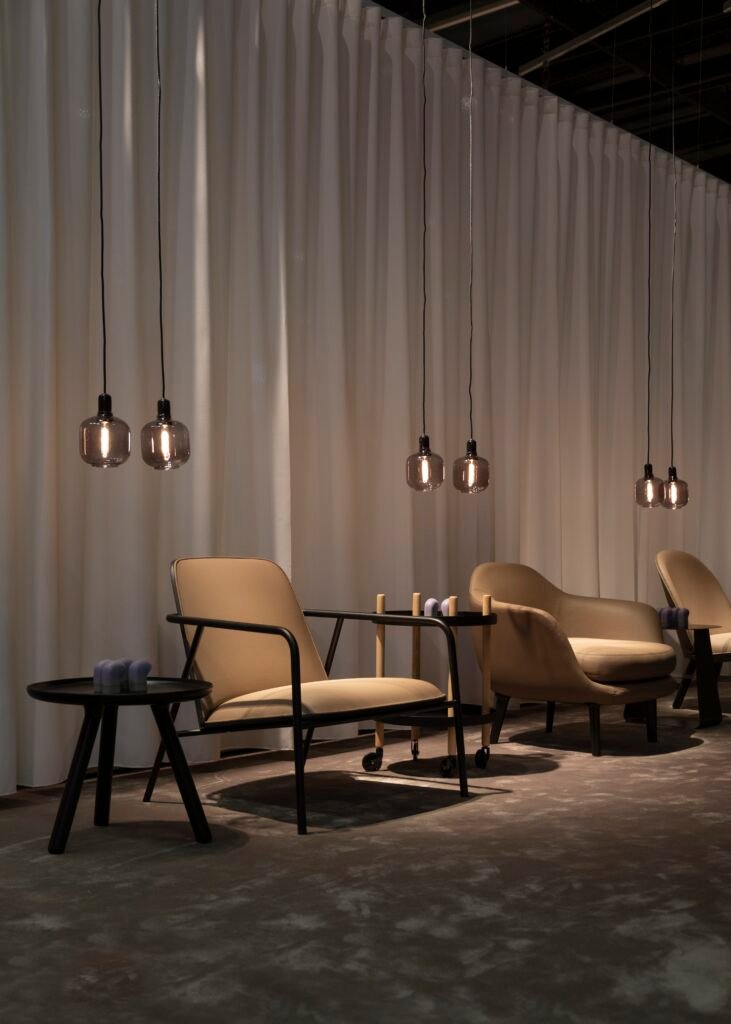
Lighting Techniques in Architectural Design
When designing architectural lighting, various techniques can be employed to achieve specific results. These techniques can enhance the functionality and mood of a space, creating the desired atmosphere.
Natural Lighting Integration
Integrating natural lighting into architectural design has numerous benefits. It not only reduces the need for artificial lighting during daylight hours but also provides a connection to the outside environment. Techniques such as the strategic placement of windows or skylights, light shelves, or lightwells can maximize the penetration of natural light into a space. Harnessing natural lighting not only enhances the aesthetics of a space but also contributes to energy efficiency and the well-being of occupants.
Artificial Lighting Installation
Artificial lighting serves as a supplement or replacement for natural lighting when it is insufficient or unavailable. When choosing artificial lighting fixtures, factors such as color temperature, brightness, and the type of bulb or lamp used must be considered. The installation of these fixtures should be done strategically, taking into account the purpose and function of the space. This involves selecting appropriate fixtures, determining optimal placement, and considering factors such as glare control, uniformity of light distribution, and shadow management.
Task Lighting vs Ambient Lighting
Task lighting and ambient lighting serve different purposes and should be carefully considered when designing the lighting for a space. Task lighting provides focused illumination for specific activities, such as reading, cooking, or working. It should be directed to prevent glare and shadows, ensuring optimal visibility for the task at hand. Ambient lighting, on the other hand, provides general illumination to set the overall mood and create a comfortable environment. Balancing both task and ambient lighting is crucial to create a well-lit and visually appealing space.
Factors to Consider in Architectural Lighting Design
Several factors must be taken into account when designing architectural lighting. These factors help ensure that the lighting design aligns with the needs and requirements of the building, its occupants, and the surrounding environment.
Building Location and Orientation
The location of a building plays a significant role in lighting design. The orientation of the building in relation to the sun’s path affects the availability and distribution of natural light. Understanding the solar angles and the path of sunlight throughout the day allows for the optimization of natural lighting integration. Additionally, geographical considerations such as climate, weather patterns, and ambient light conditions should also be taken into account.
Building Function and User Needs
The function of the building and the needs of its occupants should be at the forefront of the lighting design process. Different spaces within a building have varying lighting requirements. For instance, a healthcare facility may require bright and evenly distributed lighting to facilitate medical procedures, while a residential living room may benefit from a more relaxed and cozy lighting atmosphere. Considering the tasks, activities, and emotional responses associated with each space ensures that the lighting design supports the intended use of the building.
Energy Efficiency and Sustainability
In today’s world, energy efficiency and sustainability have become paramount in architectural lighting design. Considering energy-efficient lighting fixtures, smart lighting controls, and integrated daylighting systems can greatly reduce energy consumption. Utilizing LED technology, for example, provides high energy efficiency, long lifespan, and reduced maintenance costs. Additionally, incorporating lighting controls, such as occupancy sensors and dimming systems, allows for better control over light levels and further energy savings.
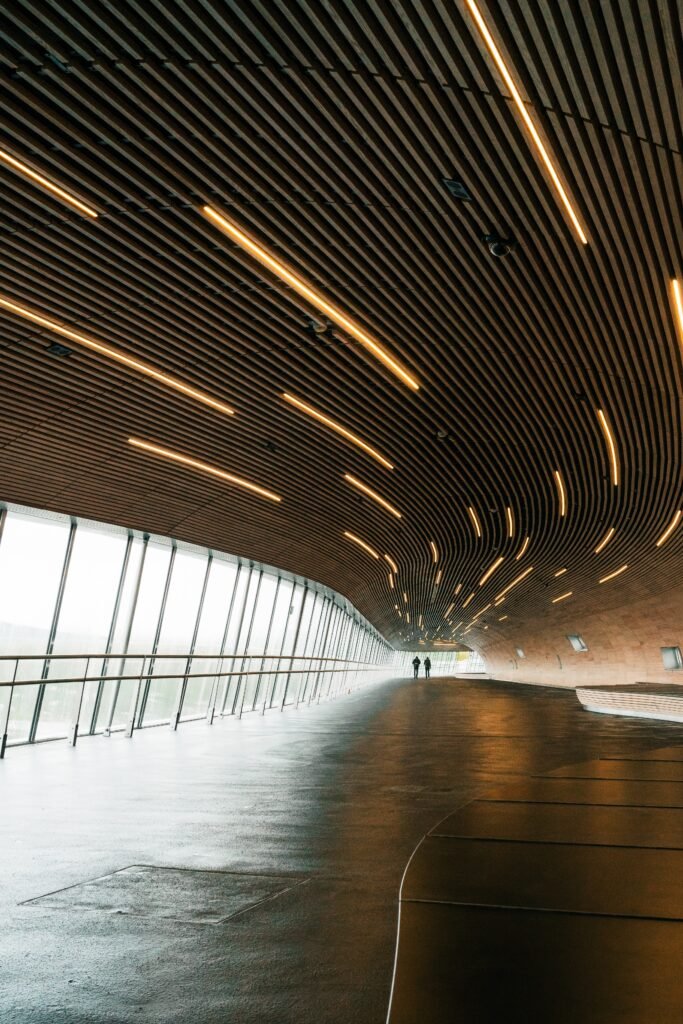
Collaboration in Architectural Lighting Design
Architectural lighting design is a collaborative process that involves multiple parties working together to achieve the desired lighting outcome.
Architect and Lighting Designer Relationship
The relationship between the architect and the lighting designer is crucial in achieving a cohesive design. Architects provide the overall vision, while lighting designers bring their expertise in creating effective lighting solutions. Collaboration from the early stages of a project allows for a holistic approach where lighting design integrates seamlessly with the architectural design. Regular communication, sharing of ideas, and understanding of each other’s perspectives are key to a successful partnership.
Engaging Other Design Professionals
Architectural lighting design often involves collaboration with other design professionals, such as interior designers, electrical engineers, and landscape architects. Engaging these professionals allows for a comprehensive approach to lighting design, ensuring that all aspects of the built environment are well-lit and visually cohesive. By working in synergy, each professional can contribute their expertise and create a harmonious lighting scheme that integrates seamlessly with other design elements.
The Role of Technology in Architectural Lighting
Advancements in technology have revolutionized architectural lighting, offering new possibilities and enhancing the overall lighting experience.
Advancements in LED Lighting
LED (Light Emitting Diode) lighting has rapidly developed into the preferred lighting technology in architectural design. LEDs offer numerous advantages, including energy efficiency, low heat emission, long lifespan, and design flexibility. LED fixtures are available in a variety of shapes, sizes, and color temperatures, allowing for endless possibilities in lighting design. The evolution of LED technology has not only transformed the lighting industry but has also opened up new avenues for creativity and innovation in architectural lighting design.
Smart Lighting Systems
Smart lighting systems utilize technology to control and manage lighting fixtures. These systems offer features such as programmable schedules, occupancy sensors, and energy monitoring. They enable easy adjustments of light levels, color temperature, and ambiance through mobile applications or integrated control panels. Smart lighting allows for increased energy efficiency, customization, and adaptability to changing needs. The integration of smart lighting systems can enhance the overall user experience and simplify maintenance and management processes.
Lighting Control and Automation
Lighting control systems allow for precise control over the on/off cycles, dimming levels, and color temperature of lighting fixtures. Automated lighting control systems can be programmed to respond to specific events, time schedules, or occupancy patterns. This adds convenience, energy efficiency, and customization to architectural lighting design. With the ability to create dynamic lighting scenes and presets, control systems enable architects and designers to create immersive and captivating experiences.
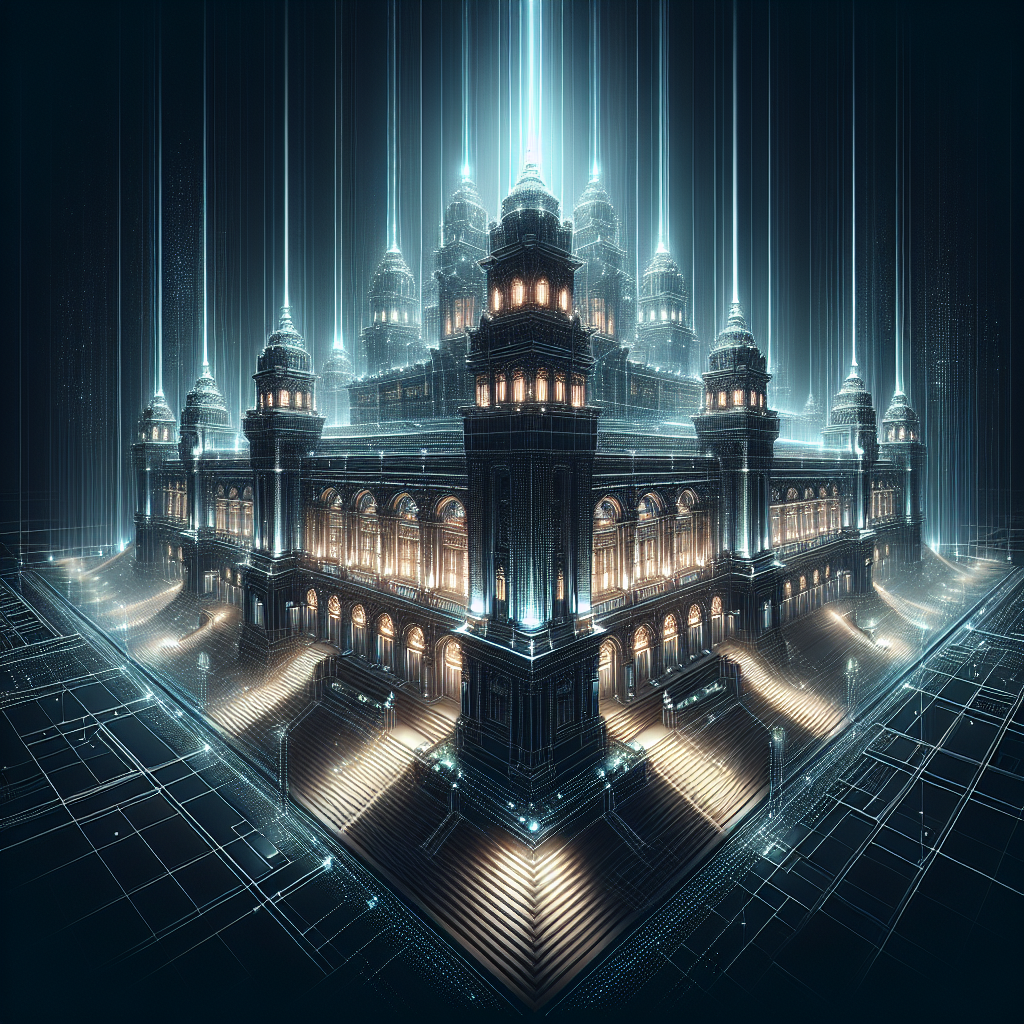
The Impact of Architectural Lighting on People
Architectural lighting design has a profound impact on people’s well-being, mood, and even their safety.
Enhancing Mood and Well-being
Lighting has a significant influence on human emotions and well-being. Properly designed lighting can create a welcoming and comfortable environment, improving the mood of occupants and promoting a sense of well-being. Warm, soft lighting with lower color temperatures can create a calming and relaxing atmosphere, while bright, cool lighting with higher color temperatures can enhance alertness and productivity. Appropriate lighting design is essential to ensure spaces meet the emotional needs of their users.
Health and Safety Considerations
Architectural lighting design also plays a crucial role in ensuring the health and safety of building occupants. Adequate lighting levels are necessary to prevent accidents and ensure clear visibility. Proper lighting can help eliminate shadows, reduce glare, and provide even illumination, enhancing the safety of spaces. Additionally, research has shown that exposure to natural light can positively impact the circadian rhythm, sleep quality, and overall health of individuals. Incorporating natural lighting strategies in architectural lighting design can contribute to the well-being of occupants.
Evaluating the Success of Architectural Lighting
The success of architectural lighting design can be evaluated based on several key factors.
Visual Comfort and Ergonomics
Visual comfort refers to the quality of lighting that enables users to perform tasks comfortably and efficiently. It involves factors such as glare avoidance, color rendering, and uniformity of light distribution. Ergonomics focuses on creating lighting conditions that minimize eye strain and fatigue, allowing for extended periods of comfortable visual work. By considering these aspects, architects and lighting designers can provide lighting solutions that optimize visual comfort and ergonomics for the occupants of a space.
Aesthetics and Visual Impact
Aesthetics play a significant role in architectural lighting design. The visual impact of lighting fixtures and lighting concepts can greatly enhance the overall atmosphere and ambiance of a space. From grand lighting installations to subtle lighting enhancements, properly designed lighting can evoke emotions, create drama, and accentuate architectural features. When the lighting design successfully integrates with the architecture, it results in a visually stunning and visually cohesive environment.
Energy Efficiency Performance
Evaluating energy efficiency performance is crucial in today’s environmentally conscious world. An effective architectural lighting design should consider energy-efficient lighting alternatives, control systems, and daylight utilization strategies. By optimizing energy consumption and utilizing sustainable practices, lighting design can significantly reduce the carbon footprint of a building. Energy-efficient lighting choices not only contribute to environmental sustainability but also present long-term cost savings for building owners.
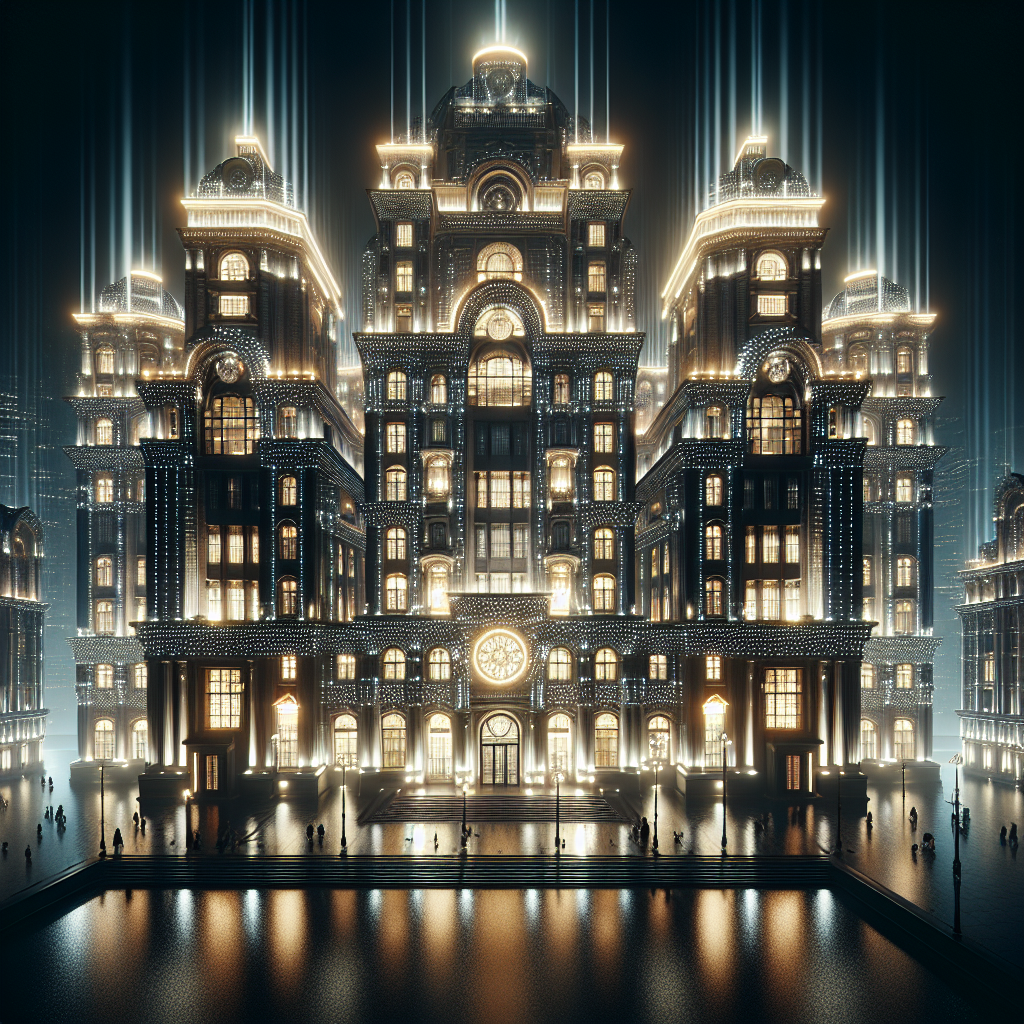
Examples of Notable Architectural Lighting Design
Throughout history, numerous buildings have showcased exceptional architectural lighting design, leaving a lasting impact on their viewers.
Iconic Structures with Creative Lighting Concepts
The Sydney Opera House in Australia is an iconic example of architectural lighting design. The structure’s sculptural form is highlighted by carefully placed lighting fixtures, emphasizing its sails and creating a stunning visual impact. The Burj Khalifa in Dubai demonstrates the power of accent lighting, as the world’s tallest building is adorned with dynamic LED lighting that illuminates its facade, transforming its appearance at night. These and many other examples inspire architects and lighting designers to push the boundaries of architectural lighting.
Residential and Commercial Lighting Innovations
In residential and commercial lighting design, creativity and functionality often go hand in hand. Innovative lighting concepts can transform a space into a captivating environment. A residential project like the Lighting and Architecture Workshop House in Japan utilizes embedded lighting within the structure to create an ethereal glow, blurring the boundaries between architecture and light. The Apple Store on Fifth Avenue in New York City embraces the concept of light as an architectural element. The store’s iconic glass cube features a ceiling with integrated lights that flood the space below, creating a seamless and immersive shopping experience. These examples highlight how lighting design can elevate residential and commercial spaces to new heights.
Future Trends in Architectural Lighting Design
As technology continues to evolve, the future of architectural lighting design holds exciting possibilities and trends.
Integration of Internet of Things (IoT)
The integration of IoT in architectural lighting design allows for enhanced connectivity and control. Lighting fixtures can be connected to a network, enabling real-time monitoring, data collection, and remote control. IoT can enable dynamic lighting scenarios that respond to user preferences, weather conditions, or other external factors. The interconnectedness of different devices and systems opens up endless possibilities for personalized and adaptive lighting design.
Human-centric Lighting
With increased knowledge of the human circadian rhythm and the impact of light on our well-being, human-centric lighting is gaining traction. Human-centric lighting focuses on mimicking and enhancing natural lighting conditions to regulate our biological responses. This can involve dynamic color temperature changes, adjustable lighting intensities, and even the inclusion of lighting fixtures that simulate the qualities of natural light. As our understanding of the interaction between light and human health evolves, human-centric lighting will continue to shape the future of architectural lighting design.
Bioluminescent Lighting Concepts
The concept of bioluminescent lighting draws inspiration from nature, where organisms emit their own light. Bioluminescent lighting involves the use of genetically modified organisms or bioengineered materials that emit natural, non-electric light. This emerging technology holds potential for creating sustainable and visually striking lighting solutions. From glowing plants to bacteria-based light fixtures, bioluminescent lighting offers a new frontier in architectural lighting design that is both environmentally friendly and captivating.
In conclusion, architectural lighting design is a vital element in shaping the visual experience, functionality, and mood of architectural spaces. By considering design principles, utilizing lighting techniques, and incorporating factors such as user needs, location, and technology, architects and lighting designers can create spaces that inspire, engage, and enhance the well-being of occupants. With the continued advancement of technology and the exploration of innovative lighting concepts, the future of architectural lighting design looks bright, promising exciting possibilities and endless creativity.



